|
|
|
Sort Order |
|
|
|
Items / Page
|
|
|
|
|
|
|
| Srl | Item |
| 1 |
ID:
137191
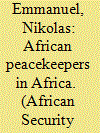

|
|
|
|
|
| Summary/Abstract |
African states today are strongly encouraged by the United States (US) and other members of the international community to play a more central role in confronting crises on the continent. Indeed, in recent years African armed forces have increasingly served as the backbone supporting various peacekeeping operations in the region. It is important to add that the international community has frequently tried to facilitate the deployment of African armed forces with aid and training. From this reality, the following study goes beyond the current literature by focusing on the international factors behind African participation in United Nations (UN) peacekeeping operations in Africa. In doing so, this research focuses on US military aid and foreign troop training from 2002 to 2012, and its impact on African deployments into UN peacekeeping missions in Africa. As can be expected, such third-party help appears to be an important motivating factor encouraging African troop deployment into crises on the continent.
|
|
|
|
|
|
|
|
|
|
|
|
|
|
|
|
| 2 |
ID:
038376
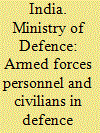

|
|
|
|
|
| Publication |
New Delhi, Ministry of Defence, 1980.
|
| Description |
156p.
|
|
|
|
|
|
|
|
|
|
|
|
Copies: C:1/I:0,R:0,Q:0
Circulation
| Accession# | Call# | Current Location | Status | Policy | Location |
| 021669 | 355.640954/IND 021669 | Main | On Shelf | General | |
|
|
|
|
| 3 |
ID:
091130
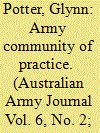

|
|
|
|
|
| Publication |
2009.
|
| Summary/Abstract |
In these times of economic frugality, the Army needs to consider all the avenues and opportunities available for the training and development of our soldiers and throw away some long held beliefs about how and by whom competence can be assessed and awarded. This article examines workplace learning and the contribution of Communities of Practice, Learning and Labour Networks to the gaining of knowledge, competence and expertise by our soldiers.
|
|
|
|
|
|
|
|
|
|
|
|
|
|
|
|
| 4 |
ID:
019199
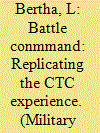

|
|
|
|
|
| Publication |
Nov-Dec 2000.
|
| Description |
9-16
|
|
|
|
|
|
|
|
|
|
|
|
|
|
|
|
| 5 |
ID:
133504
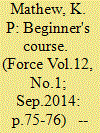

|
|
|
|
|
| Publication |
2014.
|
| Summary/Abstract |
I spent about a third of my three decade-long innings with the Indian Navy on training jobs. These included what was called Sub of the Gun or being the nursemaid to freshly inducted direct entry acting sub lieutenants on the training ship INS Cauvery, command of the cadet training ship INS Beas and Commandant of the Naval Academy at INS Mandovi. The primary task during the first two tenures listed was to make the trainees' experience the basics of seafaring on their first exposure to a ship and the sea, or provide them with their - 'sea legs' - in nautical parlance.
|
|
|
|
|
|
|
|
|
|
|
|
|
|
|
|
| 6 |
ID:
053558
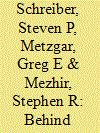

|
|
|
|
|
| Publication |
May-Jun 2004.
|
|
|
|
|
|
|
|
|
|
|
|
|
|
|
|
| 7 |
ID:
016217
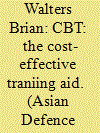

|
|
|
|
|
| Publication |
July 1993.
|
| Description |
26-29
|
|
|
|
|
|
|
|
|
|
|
|
|
|
|
|
| 8 |
ID:
093448
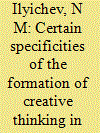

|
|
|
| 9 |
ID:
100968
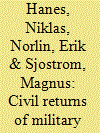

|
|
|
|
|
| Publication |
2010.
|
| Summary/Abstract |
The purpose of our study was to examine the effect of military training on the earnings of young men in Sweden. The analysis is based on the cohort of males born in 1973. This cohort was conscripted during a time of rapid change in Swedish security policy and substantial cutbacks in the armed forces. As a consequence, a relatively large proportion of the cohort was assigned a service category after the enlistment test but one third of these individuals were never conscripted. We argue that these organizational changes, along with data on important background variables, make it possible to rely on selection on observables. A clear finding is that military training has a positive effect on annual earnings at the age of 30 for those men in the category 'private soldier' who do not subsequently obtain a high level of educational.
|
|
|
|
|
|
|
|
|
|
|
|
|
|
|
|
| 10 |
ID:
171622
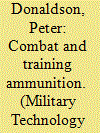

|
|
|
| 11 |
ID:
184199
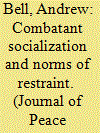

|
|
|
|
|
| Summary/Abstract |
Can armed groups socialize combatants to norms of restraint – in essence, train soldiers to adopt norms of international humanitarian law on the battlefield? How can social scientists accurately measure such socialization? Despite being the central focus of organizational and ideational theories of conflict, studies to date have not engaged in systematic, survey-based examination of this central socialization mechanism theorized to influence military conduct.
This study advances scholarly understanding by providing the first comparative, survey-based examination of combatant socialization to norms of restraint, using surveys and interviews with US Army cadets at the US Military Academy (USMA), Army Reserve Officer Training Corps (ROTC), and active duty Army combatants. Additionally, to better understand ‘restraint’ from combatants’ perspective, this study introduces the concept of the ‘combatant’s trilemma’ under which combatants conceptualize civilian protection as part of a costly trade-off with the values of military advantage and force protection.
Survey results hold both positive and negative implications for socialization to law of war norms: military socialization can shift combatants’ preferences for battlefield conduct. However, intensive norm socialization may be required to shift combatants’ preferences from force protection to civilian protection norms. Study findings hold significant implications for understanding violence against civilians in conflict and for policies to disseminate civilian protection norms in armed groups worldwide.
|
|
|
|
|
|
|
|
|
|
|
|
|
|
|
|
| 12 |
ID:
056509
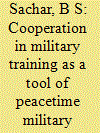

|
|
|
| 13 |
ID:
086230
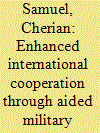

|
|
|
|
|
| Publication |
2009.
|
| Summary/Abstract |
Major powers have tried to use military training programmes, manifested through military-to-military cooperation running the gamut of training exchanges to joint exercises, to defence-related dialogues through seminars and the like, in order to engage and influence other countries in the furtherance of their strategic interests. The US model is notable for being innovative, flexible, scalable, and broad in its approach, and this has fetched it considerable dividends.
|
|
|
|
|
|
|
|
|
|
|
|
|
|
|
|
| 14 |
ID:
123827
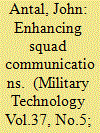

|
|
|
|
|
| Publication |
2013.
|
| Summary/Abstract |
As budget cuts slice into military operations, training and procurement, nearly every modern militrary force in the world is trying to figure out how to operate with less funding.
|
|
|
|
|
|
|
|
|
|
|
|
|
|
|
|
| 15 |
ID:
079197
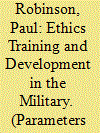

|
|
|
| 16 |
ID:
132850
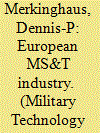

|
|
|
|
|
| Publication |
2014.
|
| Summary/Abstract |
This article is an overview of the modelling, simulation and training (S&T) industry in the wider European area, including Russia, this article will shed some light on the MS&T sector in Europe, focusing on the military training offered by their armed forces, and the organizations beyond them, which provide products and services, both to the domestic market, and the armed forces across the world.
|
|
|
|
|
|
|
|
|
|
|
|
|
|
|
|
| 17 |
ID:
188904
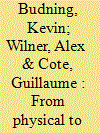

|
|
|
|
|
| Summary/Abstract |
The Synthetic Environment (SE) takes the power of computing, digital processing, artificial intelligence, extended reality technology, and other advancements borrowed from the gaming industry to create a computer simulation with near-perfect levels of realism. Designed to enable connectivity across all domains and platforms, SE has the potential to dramatically improve military training, force development, situational awareness, and communications. Our article provides a technical overview of SE and offers a high-level analysis of its use in Canada, the US, UK, and Australia. Informed by dozens of interviews and a roundtable workshop held with experts from academia, industry, and government, this article relates SE to Canada’s future defence policy. We argue that leveraging SE effectively will require that Canada commit to a long-term SE program, promote new government-industry partnerships, encourage top-down leadership from both civilian and military officials, and consolidate domestic skillsets and industry knowhow to maintain and retain Canadian sovereignty.
|
|
|
|
|
|
|
|
|
|
|
|
|
|
|
|
| 18 |
ID:
188914
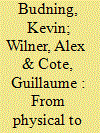

|
|
|
|
|
| Summary/Abstract |
The Synthetic Environment (SE) takes the power of computing, digital processing, artificial intelligence, extended reality technology, and other advancements borrowed from the gaming industry to create a computer simulation with near-perfect levels of realism. Designed to enable connectivity across all domains and platforms, SE has the potential to dramatically improve military training, force development, situational awareness, and communications. Our article provides a technical overview of SE and offers a high-level analysis of its use in Canada, the US, UK, and Australia. Informed by dozens of interviews and a roundtable workshop held with experts from academia, industry, and government, this article relates SE to Canada’s future defence policy. We argue that leveraging SE effectively will require that Canada commit to a long-term SE program, promote new government-industry partnerships, encourage top-down leadership from both civilian and military officials, and consolidate domestic skillsets and industry knowhow to maintain and retain Canadian sovereignty.
|
|
|
|
|
|
|
|
|
|
|
|
|
|
|
|
| 19 |
ID:
126773
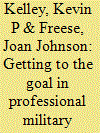

|
|
|
|
|
| Publication |
2013.
|
| Summary/Abstract |
Professional military education (PME) has been under fire from a broad range of critics for a variety of reasons, including credibility, intellectual rigor and administrative mismanagement. But pme provides an invaluable learning and growth experience to those beyond the select few of america's fighting forces who attend elite civilian graduate programs. The practitioner and security oriented curriculum, and inter-service and civilian mix of seminar students, is not available elsewhere. Therefore, PME must be fixed, not abandoned as some have suggested. A first step in fixing the problem is to identify gaps between what is intended by congress and military leadership and what is being executed. This article proposes and outlines a study to identify those gaps.
|
|
|
|
|
|
|
|
|
|
|
|
|
|
|
|
| 20 |
ID:
069417
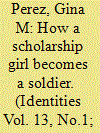

|
|
|
|
|
|
|
|